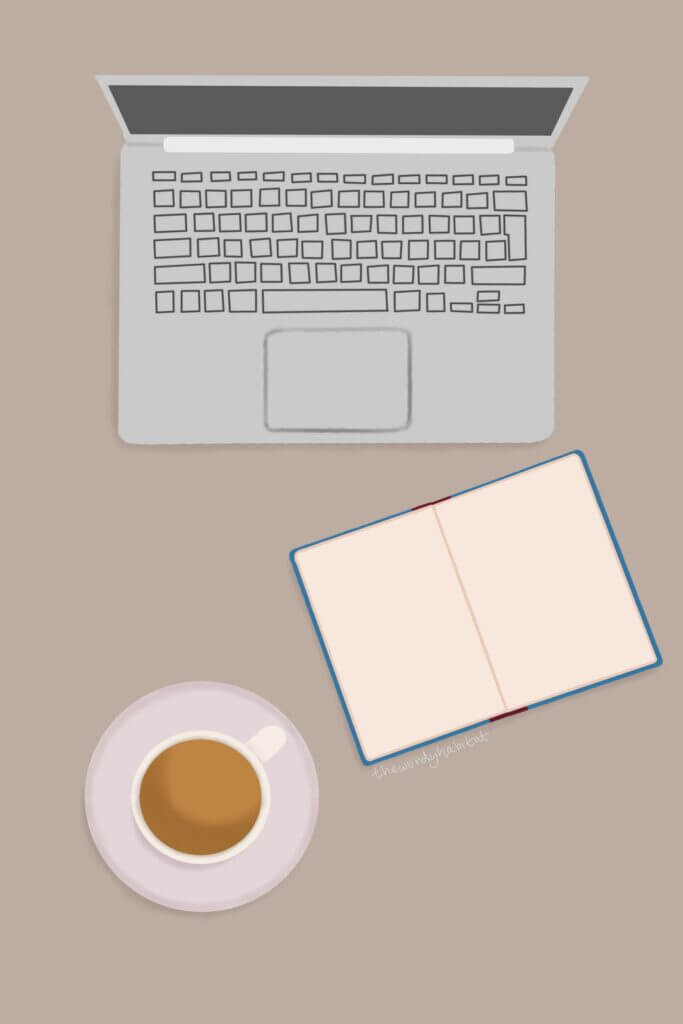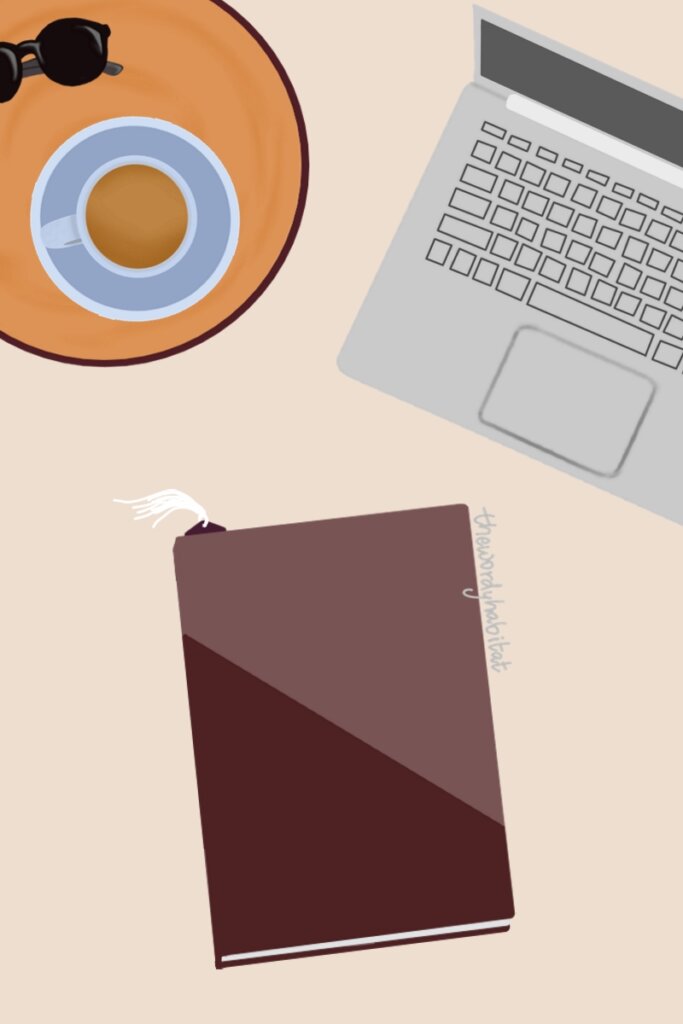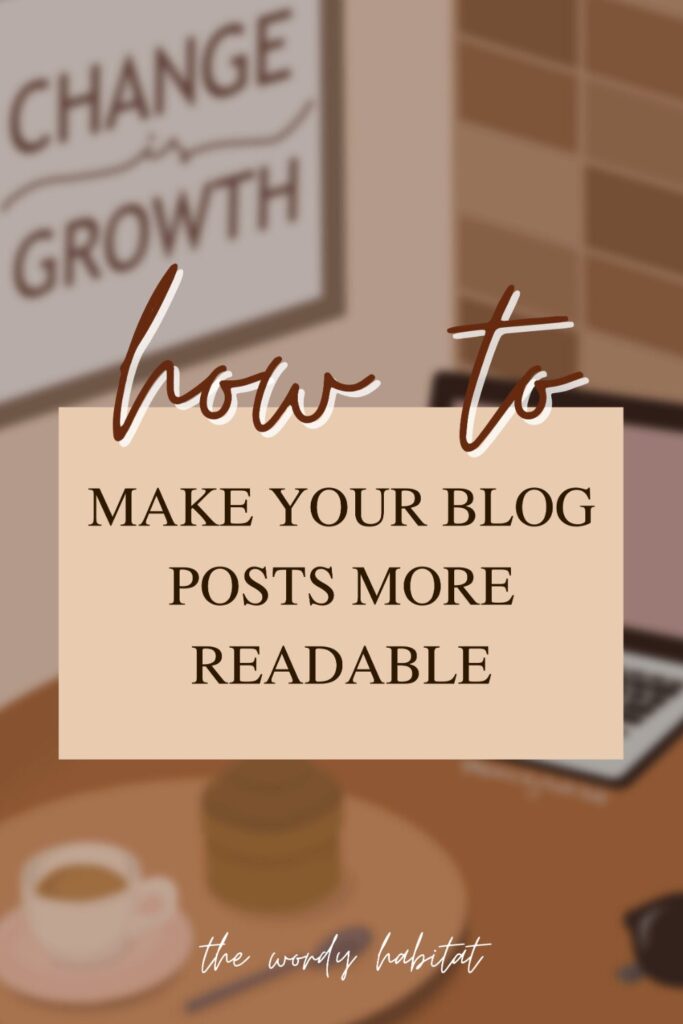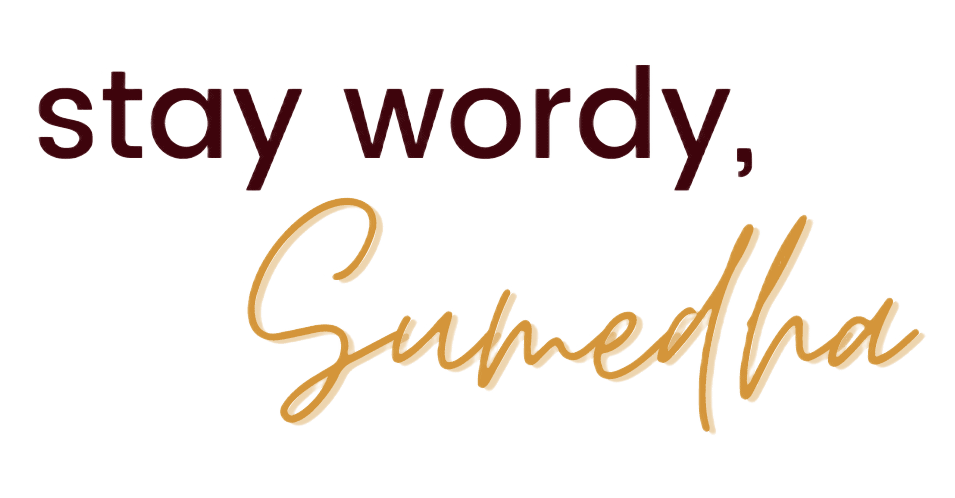There is more that goes into writing blog posts than simply typing words. Formatting is a huge part of the process and is very important.
While formatting does not always take readability into account, they go hand-in-hand. It can make your blog posts more readable or it can turn readers away from your blog.
I know that there are tons of posts out there on blog post readability. But there are a few specific things that I learnt through experience and don't see spoken about anywhere. So this post is going to be a complete guide on making your blog posts more readable with better and exact advice.

what is readability and why does it matter?
Before starting with the main points, I do want to quickly discuss the basics.
Out of everything that I learned in my years of blogging, the biggest lesson has been about how important content is. Posts with good content and bad readability can fail. When I say "how readable a blog post is", I mean how easily one can gain information from it.
Most people don't have the time to spend digging through your blog post to find the information that they came for. If you're promising 5 book recommendations but they are buried in blocks of content with no headings or distinction, the reader will become frustrated.
A well-formatted blog post puts across the main points clearly such that the reader doesn't have any problems finding them.
Good readability facilitates skim-reading. We all wish that readers will read every single word of our blog posts, but not everyone has the time. By making a post easy to skim, you're providing information quickly.
If a post provides enough information on a skim read, many readers actually come back and read the post fully because it is helpful and the details would contain more.
Each post's presentation is important as well. If presented well, reading it will feel pleasant and the reader will want to read more.
A reader is likely to stay longer on your blog if your posts are easy to read. Especially if there are subtle and relevant links within and at the end of the post to encourage them to stay. This is actually measured as a factor called bounce rate.
Hence, readability is quite important and you should be paying attention to it in every blog post.

6 easy ways to make your blog posts more readable
1. choose a good overall colour scheme
Colours can make or break the readability of a post. Specifically, the background and text colours of a post. I have seen a few blogs using super bright colours or colour pairings that don't contrast well. It immediately puts me off of reading the post.
Readability takes accessibility into account. Some readers are not good with too many bright colours and some colour pairings are simply not pleasant to look at. If readers don't find your blog and post comfortable to look at and read, they will not stay long.
Choose a proper pairing of background and text colours so that your blog is accessible to all readers. If you are self-hosted, you can go a step further and install an accessibility plugin that will provide more options to readers who want them.
You can check if your colours are accessible by using a contrast checker. Enter the values of your background colour and text colour. The tool will tell you if the choice is accessible and by how much. The minimum ratio according to guidelines is 4.5:1 ratio but I would suggest trying for 6:1 contrast ratio or more.
2. use proper headings
Headings break up long blocks of text and facilitate clear division in the content.
The reason I say "proper" headings is because I've seen many guideposts recommend using headings but never say how to use them. I've come across many posts on the interwebs where headings are not helpful or relevant.
A proper heading is one that gives clear meaning to the following content. If I name the sub-heading of this section as simply "headings", it is vague and not helpful.
Phrase your headings such that they are meaningful. If the reader only reads the headings, they should be able to get the summary.
3. include a table of contents
Not all posts require a table of contents, but almost all will benefit from having one. It allows the reader to quickly see what you are talking about in the post. That way, they will know that they are getting what they came for.
An example post that does not require a table of contents is my book review on American Betiya. It has only two major sections and is written in a way that a table of contents will not add to the post. Book reviews that have a ton of information would benefit from having a table of contents.
It also allows navigation within the post using which readers can jump to the section they're most interested in. Recurring readers can quickly refer to what they came for without any hunting.
For example, a post that greatly benefits from having a table of contents is my review on A Love So Beautiful. You can immediately see all the factors that I discuss in the post and can navigate to the sections.

4. make your paragraphs shorter
Unless you're rambling and the content in that paragraph is not very important, break down your paragraphs. The best length is 3 lines, and 5 should be the maximum. If it takes more than that to put across a point, work on rephrasing your sentences.
Shorter paragraphs allow breaks when reading. I read a ton of novels but I'm mostly not reading blogs to have the same experience. Reading huge blocks of texts on a screen hurts my eyes and reduces my patience and interest.
By making your paragraphs shorter, you let the reader breathe through the white space. As a by-product, you also write better because you put across your point in a few sentences.
5. break up text with other blocks
Even if paragraphs are kept shorter, it is still a lot of text and reading. Every once in a while, readers need a longer break. Other types of blocks are the best for this.
Break up text using:
- Images. If you don't have images of your own, hundreds of stock photos are available. Make sure to add alt texts for all of them!
- Image dividers. Otherwise, you can also make small rectangular dividers that are specific to your blog theme like Leo.
- Quote blocks. When images simply don't fit, quote blocks are an option. I use these in my book reviews. Yes, they are also text but they can be skipped and give a different context which counts as a "break."
- Lists and bullets help sum up things while making them look different from the rest of the text. Like this part!
If you have a very long text block, consider dividing it with sub-headings. Generally, if there is a lot to say, the content can be broken down into points. Headings help with division and white space.

6. highlight important points well
I see a ton of bloggers who don't use any formatting for emphasis and you're missing out. It will help your readers!
Highlighting main points in text allows skim-reading. It quickly puts forth the information. If the reader is interested in knowing more about a specific point, they can read the non-highlighted text around it.
Highlighting also adds emphasis on the main points such that the readers will not miss them. The most common highlighting methods are bold, italics, underlines, different font sizes and colours.
In effect, reading the headings and highlighted text should be enough to get the gist of the post.
Take this post, for example. I've formatted it in such a way that you can get all the information just from the headings and bolded text. You can read more but you don't have to.
I say highlight important points well because I've seen it done badly. Make sure to highlight only the main points. Not every paragraph requires emphasized text.
Pay attention to how the highlighted portion reads. Take the previous paragraph for example. Highlighting "main points" does not mean anything if the reader is skim-reading. It's vague and can be dismissed as a repeated point. The emphasized parts should make sense on their own.

too much formatting is a thing
I've never seen this talked about but it needs to be said. Too much formatting is possible and should be avoided.
When I open a blog post and see multiple colours and/or multiple font sizes in one post, I feel like I'm being attacked.
Keep it simple. Not everything needs to be highlighted. If multiple things are highlighted when they're next to each other, our eyes are pulled in different directions and it becomes overwhelming.
FOR EXAMPLE, here's a paragraph where I'm going overboard with formatting. This is especially not good for skim reading. You're not even sure why there are differences in emphasis.
It may look fine when writing a post but it is confusing and frustrating to read. Use minimal emphasis which is consistent throughout the post. Even better if it is consistent across the blog.
I'm specifically mentioning this because I've done this mistake. I only noticed it when a friend asked me why I use different colours in one post and that it is frustrating. (For context, he was not a blogger.) After that, I started noticing how I used too much formatting everywhere. Since then, I've seen other bloggers do it and it immediately turns me off. I generally avoid reading such posts unless I have more patience to spare.
Here are a few guidelines to stick to:
- Use two—maximum three—methods of emphasis. And use only them throughout the post. Try to maintain a meaning for every emphasis. For example, bold for main points and italics for a little extra emphasis. And keep them different from how links are formatted in your theme.
- If you're using colours, use one dark colour. Multiple colours are overwhelming. Light shades are too bright and will not go well with light backgrounds.
- Space out images such that an image comes up once in two screens (when scrolling) unless the images correlate with the text.

blog post pre-publish checklist!
As there are so many things that have to be considered when writing a blog post, a list will make the process much easier. I've put together a printable checklist of things to do when writing a blog post—including formatting, basic admin settings, and more.
Gccess the checklist in the free resource library!
in summary
- Choose a good colour scheme which is easy to look at and read.
- Use proper headings that convey the point of the following section.
- Make your paragraphs shorter and highlight only one point per paragraph.
- Use other types of content to break up blocks of text.
- Highlight important points well so that your post is skimmable.
- Don't use more than three different formatting/highlighting types together.

let's chat!
What types of formatting do you use and like to see? I've mentioned some things that I don't like in this post such as vague headings. Is there anything that you don't like?
What constitutes a well-formatted or readable post for you? Are there any other tips that I'm missing in this post?


I am quite new to blogging, so I will definitely benefit from your tips. Thanks!
You're welcome!
Loved reading this post!! especially the last bit about too much formatting. More often than not it makes me click out of the post!!
Thank you, Fadwa!
This is such a great and helpful post Sumedha!! I definitely agree that making your post more readable using these tips encourages readers to stay longer on your blog. Ever since I started using a pre-publish checklist similar to this I've found that my blog posts get more views and I'd like to think it's because my posts are no longer massive walls of text!
Thank you, Kate! I'm glad you think so! It's surprising how evident the difference in results are when we take a few steps to make our content better.
Ah this is such a helpful post Sumedha! I remember when I first started blogging I went all out with bright colours...it was quite something *hides* Now though every piece of formatting I use has a purpose, along with me trying to stick to a limited colour palette that helps not overload the reader with bright colours everywhere. For example when I include links in my posts I will bold and put them in a specific dark purple. This indicates that there's a link there as well as breaking up the text. I also like to use boxes and other bits of HTML formatting to help break up text, emphasis things and just add some life to my posts. Although there's a fine balance between bringing it to life and killing the reader in the process xD
I definitely think when I start to properly focus my time and energy onto my blog again, I'll work on implementing contents into my posts (if I can even do that on free WP? I hope I can somehow). Oh I also love using graphic dividers to break up text, headings and sub headings too as well as bullet points. I think it's also important to remember that whilst a lot of 'blogging 101' posts talk about being consistent with your formatting/images, each post will call for slightly different formatting. That's ok and it took me a long time to be ok with that since I just liked everything to look the same. It wasn't working because the posts were different, talking about different things and called for different formatting.
Thank you, Clo! I did all of that as well and am happy I started over because dealing with those old posts was too much work haha. Now I should update old posts regularly... hopefully. You're right, there is a fine balance between bringing the post to like and overwhelming the reader haha.
You can in free WP! You can't do it with a plugin obviously so you'll have to spend time making anchor tags for every heading yourself and make a table of contents blocks, but it's not that hard.
Oh yes I agree! Not all posts are the same and consistent formatting can look different for different posts. Each individual post comes first before the blog altogether.
Thank you for the long comment ?
Great tips! Thanks for sharing!
Thanks!
This post was very enlightening! I especially find bolding important words and phrases to be very helpful to the reader. thanks for sharing
Thank you!
These are excellent suggestions! Keeping it simple, highlighting texts, and short paragraphs are all important.
xoxo
Lovelyhttp://www.mynameislovely.com
Thank you! Glad you agree ?
...now I'm itching to double check how I formatted the post I just drafted ? Awesome post Sumedha!! I'm definitely going to keep this in mind when I write posts in the future.
Thank you, Rukky! I'm glad you find it helpful ?